Implementing automation systems for facility management offers numerous benefits, including improved efficiency, cost reduction, enhanced compliance, predictive maintenance, data-driven decision support, increased safety, improved productivity, sustainability promotion, and competitive advantage.
Nonetheless, not everyone is enthusiastic about adopting automation tools for several reasons: the difficulty of selecting the appropriate tool, potential staff resistance to new technology, and, of course, concerns about costs.
In this article, we will provide tips on addressing these challenges, with a focus on various maintenance and operations automation systems, leveraging TagPoint's expertise in this field.
Obstacle #1: How to select the right automation solution for Facility Management
Organisations employ a variety of Facility Management software solutions to enhance the efficiency and workflow effectiveness of their buildings and spaces for visitors, tenants, and residents.
However, the challenge lies in the abundance of available automation technologies, which can be overwhelming.
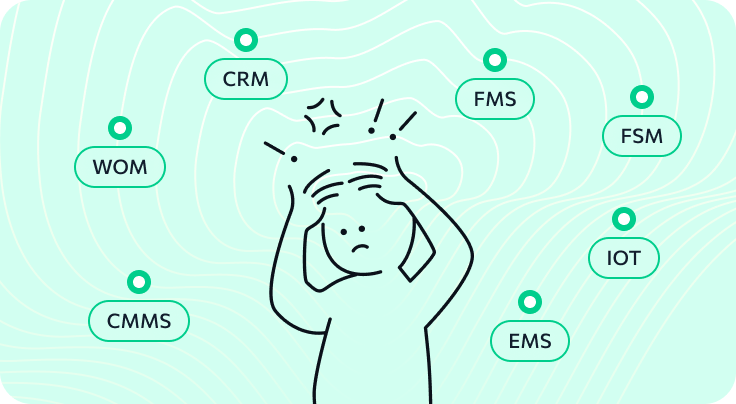 Variety of different systems
Variety of different systems
Companies often struggle to choose the right solutions for automating their business processes. Many potential users find these systems complex, ultimately resorting to traditional methods like phone calls. This results in wasted time, money, and suboptimal outcomes.
The solution to this challenge demands time and effort. To overcome it, conducting a comprehensive assessment of your company's operations is crucial, pinpointing areas that would benefit most from automation.
Through three straightforward examples, we will illustrate how process analysis guides us in problem-solving.
Example #1
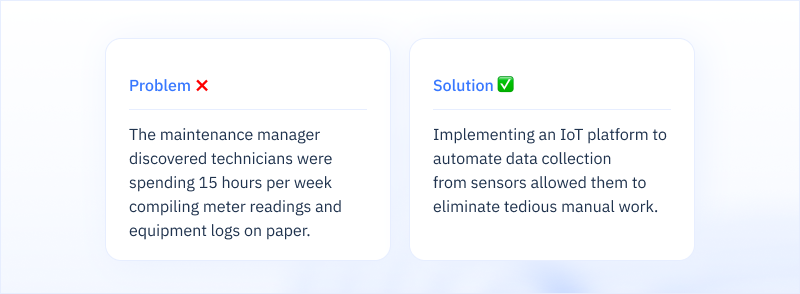 How to pinpoint areas that would benefit most from automation
How to pinpoint areas that would benefit most from automation
Example #2
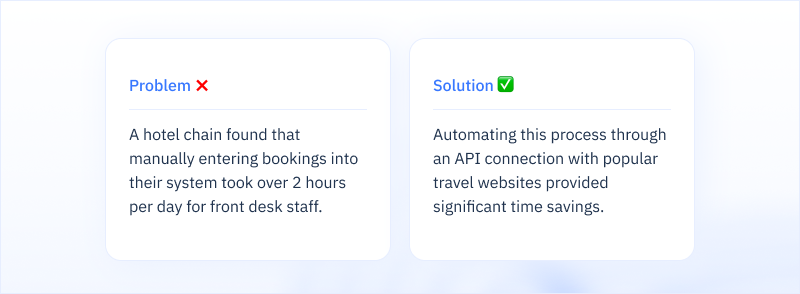 How to pinpoint areas that would benefit most from automation in hotels
How to pinpoint areas that would benefit most from automation in hotels
Example #3
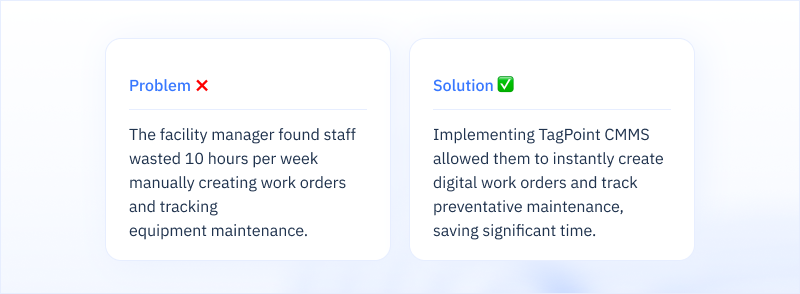 How to pinpoint areas that would benefit most from automation in facility management
How to pinpoint areas that would benefit most from automation in facility management
We have outlined essential automation requirements for service companies, offices, manufacturing sites and hotels. You can rely on these guidelines when selecting a specific solution.
Dedicating the effort to analyse workflows and quantify potential productivity gains through automation can assist managers in identifying suitable use cases and constructing a compelling business case for automation investments.
Collaborating with seasoned advisors can further facilitate the alignment of proven automation solutions with your unique pain points.
Feel free to reach out if you require consultation or assistance.
Obstacle #2: How to overcome resistance and help staff adapt to the changes
Finding the right automation system can be tricky, but an equally big challenge is making sure it fits smoothly into the workplace and how things are done.
Sometimes, the staff might not like it because they think it could affect their jobs or because they have to learn new things. They may prefer sticking to old ways instead of trying something new.
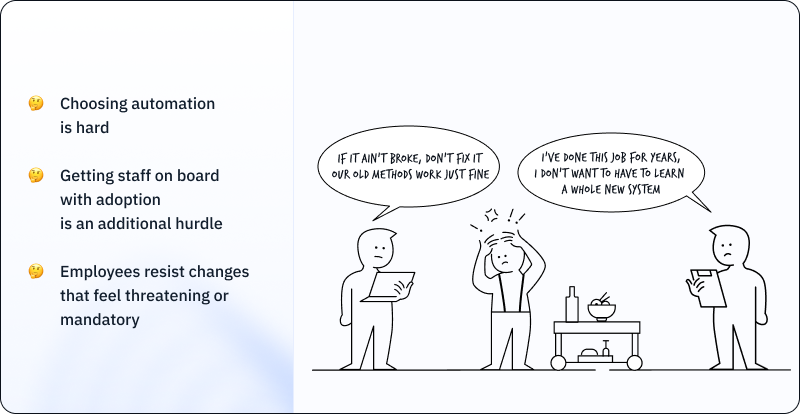 Common concerns about automation
Common concerns about automation
Ultimately, there is no single solution, but we can find tips and tricks to ease the process.
- Management should communicate the vision and purpose behind automation clearly.
For example, emphasise that automation aims to streamline repetitive tasks, allowing staff to focus on more valuable services, thus enhancing their overall job satisfaction.
You can also position tools as assisting staff rather than replacing them. Provide clear examples to prove this point.
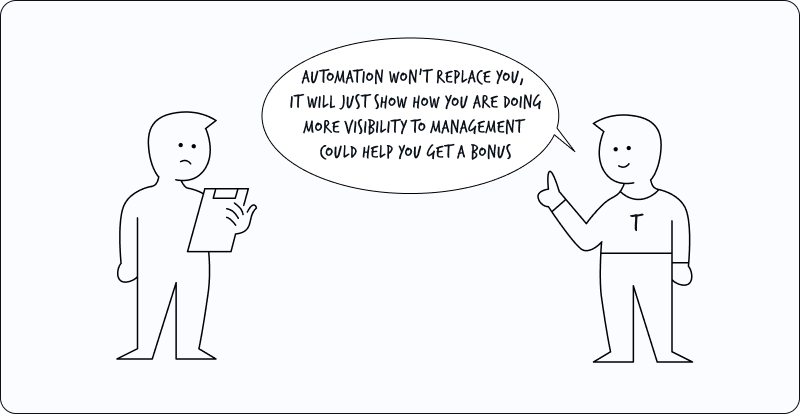 Automation can help improve job performance and get noticed by management
Automation can help improve job performance and get noticed by management
- Inform the team members, tenants, or customers about the reasons for implementing the new system through familiar communication channels like email, phone, or bulletin boards.
At TagPoint, we help with this: we have already prepared letters, videos, clear and simple presentations for this purpose.
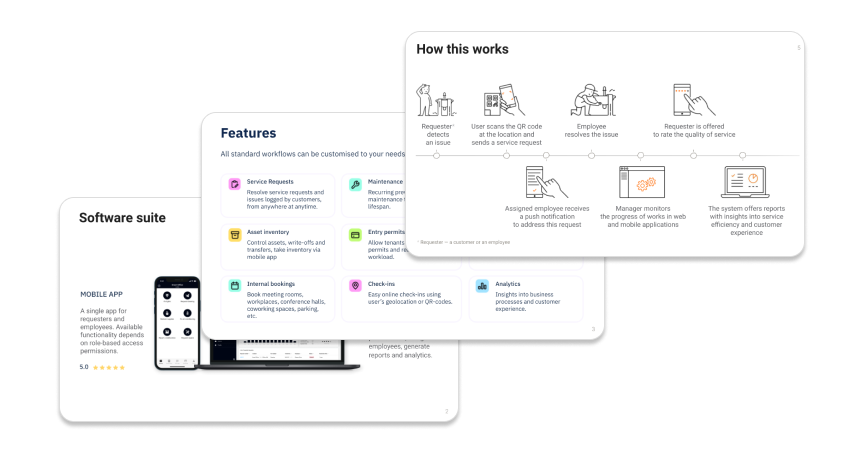 Example of product presentation
Example of product presentation
We're also recording webinars designed to help your team grasp the value of automation. Take a look at our approach with hoteliers as an example.
- Provide comprehensive training to ensure employees are comfortable with the new technology.
Typically, IT solution providers assist with this process, and the training itself doesn't require much time. At TagPoint, it usually takes about half an hour to explain and just a few clicks to become comfortable with it.
- Take a gradual approach.
It's essential to allow people the opportunity to get used to the system. Learn from the successful, painless implementation in the warehouse, where the transition was phased in over time.
- Engage, inquire, and encourage questions.
Continuously check in with your staff to gauge their progress in learning the new tool. While this doesn't imply constant oversight, it's worth noting that typically it takes 3 to 5 days for people to become familiar with it.
As time goes on, there will be fewer inquiries and more advantages. Regular check-ins are essential for proactively addressing emerging concerns.
- Demonstrate the convenience of these tools through a personal example.
Interact with the system in the presence of the team members. This firsthand experience can generate interest and contribute to the successful implementation.
 Support is essential for successful automation
Support is essential for successful automation
Obstacle #3: How to assess the costs and understanding the value of automation
The initial investment needed to automate processes and systems can seem significant. Costs associated with acquiring automation technology, training staff, and integrating it into current workflows may raise concerns for management primarily focused on short-term budgets.
While the initial cost of automation may seem high, the long-term benefits in terms of efficiency, quality, and consistency far exceed the initial investment.
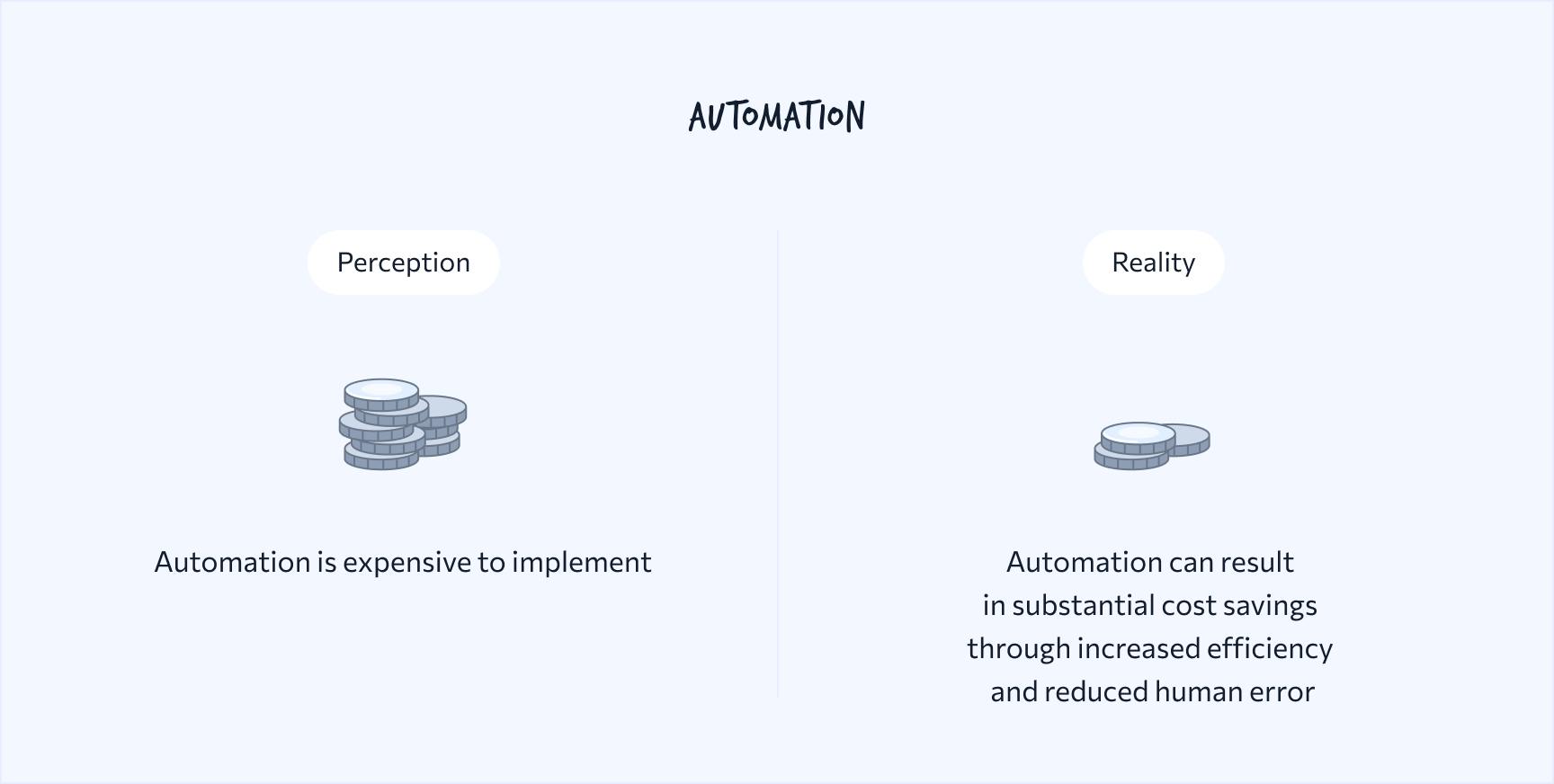 Automation is a wise investment for your business
Automation is a wise investment for your business
Steps can be taken to make adoption more affordable. Starting with a pilot project on a smaller scope and scaling gradually will spread costs over time.
Proper planning, phased implementation, and calculating lifetime savings and benefits can make automation financially viable even with tight budgets.
The key is framing automation as an investment rather than just an expense.We may not have specific knowledge for every example of automation tools, but when it comes to facility management, TagPoint excels as a CMMS.
Let's explore the anticipated benefits of implementing a system for maintaining and operating commercial properties.
- Reduction of costs per request.
By automating the processing of service requests, you can reduce costs by streamlining request generation, routing, execution control, and quality assessment. The more requests you handle, the more substantial the cost savings become.
- Significant reduction in execution time.
Automation significantly reduces the time required to fulfil requests, transforming hours into mere minutes. It optimises communication, clarifies requirements, and ensures specialists receive complete information promptly.
As an example, with TagPoint CMMS, for minor repairs you can reduce as much as 30% of time required to resolve a request or complete a work order.
Furthermore, automation brings about improvements beyond cost and time savings, including:
Enhanced competitiveness: Beyond economic benefits and operational efficiency, automating call handling helps your company stand out as a modern, forward-thinking organisation by eliminating paper records and chaotic calls.
Data accumulation: You gain valuable insights by accumulating data on the actual work of performers.
Feedback and loyalty: Automation facilitates feedback from both employees and customers, leading to increased loyalty and improved relationships.
In conclusion, implementing automation can deliver tremendous value, but overcoming challenges like solution selection, user adoption, and costs requires thoughtful strategy.
The future of Facility Management is automation done right — human-centred, phased, and adding value for all. Reach out to explore how automation can work for you.


